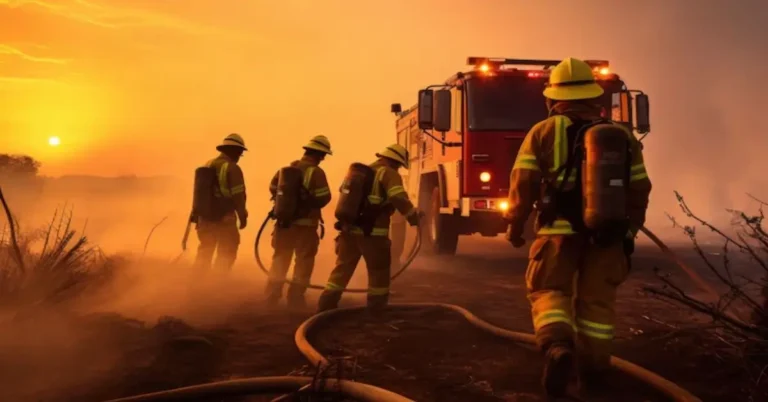When severe storms strike, utility crews become the unsung heroes, working tirelessly to restore power and ensure public safety. These teams are a critical line of defense against the disruptions caused by extreme weather conditions. The success of their emergency storm response hinges on meticulous preparation, efficient coordination, and the ability to adapt to rapidly changing environments. This article delves into the strategies and practices utility crews employ to ensure they are ready to face the challenges posed by severe storms.
Understanding the Role of Utility Crews
Utility crews are essential in maintaining the lifeline of modern society—electricity. During storms, their role expands beyond routine maintenance, including emergency response and rapid restoration. These crews are tasked with repairing damaged power lines, restoring service outages, and ensuring safety in affected areas. To execute their duties effectively, utility crews engage in comprehensive preparation strategies, ensuring they are well-equipped to handle the exigencies of storm responses. Key to their effectiveness is a clear understanding of their responsibilities and priorities during storm events, including proactive and reactive measures. Detailed preparation not only aids in speedy recovery but also reduces the impact of power outages on residential and commercial sectors. Visit this site https://divergentalliance.com/storm-recovery-restoration-services/ for more information.
Pre-Storm Planning and Preparedness
The foundation of any effective storm response lies in pre-storm planning. Utility companies maintain a comprehensive response plan that outlines procedures and protocols to follow during emergencies. These plans are continuously reviewed and updated based on past experiences and new challenges. Planning involves identifying and prioritizing critical infrastructure that needs immediate attention and ensuring that teams know their roles and responsibilities. Additionally, utility companies often establish a database of past storms and recovery efforts, which helps predict potential needs and areas of vulnerability. This proactive planning allows utility crews to anticipate emergencies, allocate resources efficiently, and respond promptly when a storm hits, thereby minimizing service disruptions and ensuring public safety.
Resource Allocation and Logistics
Efficient resource allocation is crucial in storm preparedness. Utility companies must ensure they have an adequate supply of essential materials such as transformers, cables, poles, and fuel. Logistical planning involves assessing the availability of resources and planning their distribution to areas most likely to be affected. This also includes pre-positioning equipment in strategic locations to enable rapid deployment. The utility industry relies on an intricate logistics network to transport personnel and equipment to areas impacted by storms, ensuring that response efforts can commence without delay. The strategic positioning of resources reduces response times and enhances the overall effectiveness of storm recovery operations, enabling utilities to maintain continuity of service during adverse weather conditions.
Staff Training and Readiness
Skilled and trained personnel are the backbone of any successful storm response strategy. Utility crews undergo extensive training to prepare for emergency scenarios, encompassing technical skills and safety procedures. Crews participate in regular drills and simulations that mirror real-life storm conditions, allowing them to familiarize themselves with emergency protocols and equipment. This training helps crews react swiftly and safely during actual storm events. Moreover, continuous education on the latest tools and techniques ensures that utility personnel remain adept at handling evolving challenges posed by severe weather. By investing in comprehensive training, utility companies empower their crews to perform efficiently and safely during storm responses, enhancing the overall resilience of the electric grid.
Communication and Coordination
In an emergency storm response, seamless communication and coordination are paramount. Utility companies establish comprehensive communication networks that enable real-time information sharing among crews, management, and external agencies. This includes intra-crew communication and interaction with other utility companies, government entities, and emergency services. Coordinated efforts ensure that resources are deployed where they are most needed and that information about power outages and restoration efforts is communicated to the public efficiently. In addition, utility companies utilize advanced communication technologies to monitor grid performance, identify faults, and dispatch crews promptly. This robust communication framework ensures a coordinated response that minimizes the disruption caused by storms.
Deployment Strategies During Storms
Once a storm hits, the deployment of utility crews becomes a carefully orchestrated operation. Crews are deployed based on the severity of outages and the critical nature of impacted infrastructure. Priority is given to restoring power to hospitals, emergency services, and critical public facilities. After addressing vital areas, crews systematically work through residential and commercial outages. Deployment strategies also involve flexible response plans that can be adjusted as new information about the storm’s impact comes in. Utility companies monitor weather conditions and grid performance, using this data to modify crew deployment in real time. This strategic approach helps optimize resources, reduce downtime, and expedite restoration.
Technological Advancements in Storm Response
Integrating technology into storm response efforts has revolutionized how utility crews tackle emergencies. Innovative grid technology enables real-time monitoring of electricity flow, helping detect faults quickly and accurately. Automated systems can isolate damaged sections of the grid, allowing for targeted repairs and reducing outage areas. Additionally, utility companies use predictive analytics to forecast potential damage based on storm severity and historical data, allowing crews to address areas of concern preemptively. Drones and remote sensing technologies assist in assessing damage and providing critical information for strategic planning. These technological advancements enhance the efficiency and effectiveness of storm response, ensuring that utility crews can confidently meet the challenges posed by severe weather.
Conclusion
The preparation and response efforts of utility crews are essential in mitigating the impact of storms on electrical infrastructure and public safety. Through meticulous pre-storm planning, strategic resource allocation, and continuous staff training, utility companies ensure their crews are ready for the challenges posed by severe weather. Moreover, integrating advanced technologies and robust communication systems optimizes the deployment and coordination of response efforts. These collective strategies underscore the importance of preparation and adaptability in emergency storm response, highlighting utility crews’ pivotal role in sustaining societal resilience during and after storms.

